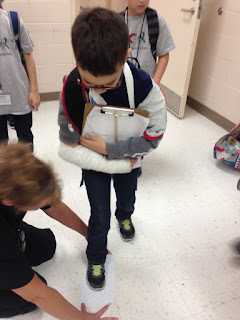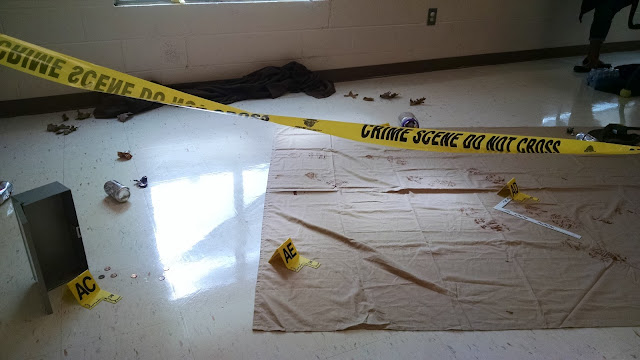We were back to our data investigations this week. Students are completing a real world project to show what they know about creating line plots and describing a data set in terms of median, mode, and range. Students are working in partners to use the results to answer our question, "How fast does the heart of a third grader beat after exercise?" Today we collected data by measuring our heart rates after two minutes of jumping jacks.
 |
| Line Plot Rough Drafts |
Our Habit of Mind focus for today was Gathering Data through all Senses. Students connected this to crime scene investigation by making observations of evidence. They learned the terms qua
Litative (describe with
Language) and qua
Ntitative (measure with
Numbers). They also watched this
video and learned the definition of inference and how inferences help explain the observations that we make.
Inference- an explanation of an observation based on prior knowledge.
 |
| An Explanation of an |
 |
| Observation based on |
 |
| Prior |
 |
| Knowledge |
We wrapped up our day with part 2 of our Critical Thinking video series. We looked at the 5 standards of critical thinking (clear, accurate, fair, relevant, logical) and questions we can ask ourselves to make sure we are meeting each one. We also did some brain stretching plexers. Try these for yourself!
















